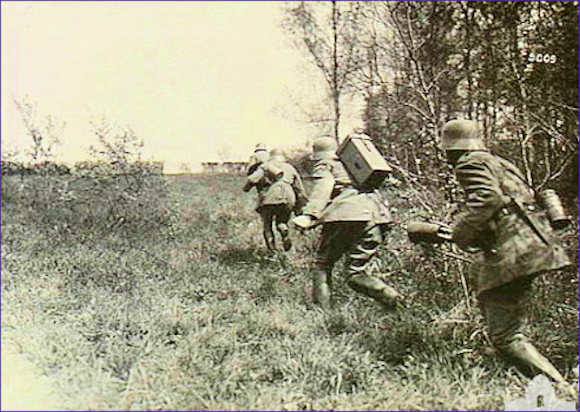 |
| German Troops Assembling for Operation Michael |
In The German Offensives of 1918: The Last Desperate Gamble, defense analyst and military historian Ian Passingham provides a concise history of the series of German offensives on the Western Front.
The topic, of course, lends itself to Passingham’s chronological approach. He covers the various attacks as they unfold, giving both high-level and lower-level accounts of the planning and fighting. Given the constraints of a comparatively small volume, Passingham succeeds very well in giving both views of the campaigns. This approach also illustrates how the British and French adapted over time and how the Germans began to tire and become more disheartened. Indeed, Passingham credits the unexpected British staunch defense, even in retreat, with blunting and eventually defeating the offensives.
Passingham rightfully considers the difficulties of waging coalition warfare in 1918; his conclusions generally support a positive assessment of British commander Field Marshal Sir Douglas Haig, while still acknowledging British failures. He lays the blame for the German failures squarely on General Erich Ludendorff’s shoulders. Passingham notes Ludendorff’s well-known disdain for strategic goals, and he criticizes Ludendorff for overreach: “[Ludendorff’s plan was] too ambitious, and took too little account of the enemy’s capabilities” (p. 100). While the so-called storm troop tactics the Germans employed were effective and have been highly touted, the author cites some drawbacks, including a depletion of highly trained manpower that had an impact on future operations.
 |
| Infiltrating a British Position, Spring 1918 |
The German offensives played out by the end of July, and Passingham continues his narrative to cover the late July, August, and September offensives by the Allies in order to show how completely the pendulum had swung in their favor. In a concluding section, Passingham blames postwar revisionists and David Lloyd George for the negative views of Field Marshal Sir Douglas Haig and the emergence of the view that the war was a futile bloodbath. The author’s views, in this regard, coincide with recent scholarship.
There are only 21 endnotes in the book, making it difficult to check the author’s information, but he has included a good bibliography for further reading. The three maps in this book are sufficient to understand the scope and geographic location of the German offensives, but the book suffers from the lack of a couple of nice maps detailing each offensive separately and including German and Allied units. Sixteen pages of photographs are included. Several helpful appendices cover German tactics and weapons and orders of battle. The German Offensives of 1918 serves as a fine, concise introduction to the topic, and it is highly recommended for anyone who is interested in the Western Front.
Peter L. Belmonte

No comments:
Post a Comment